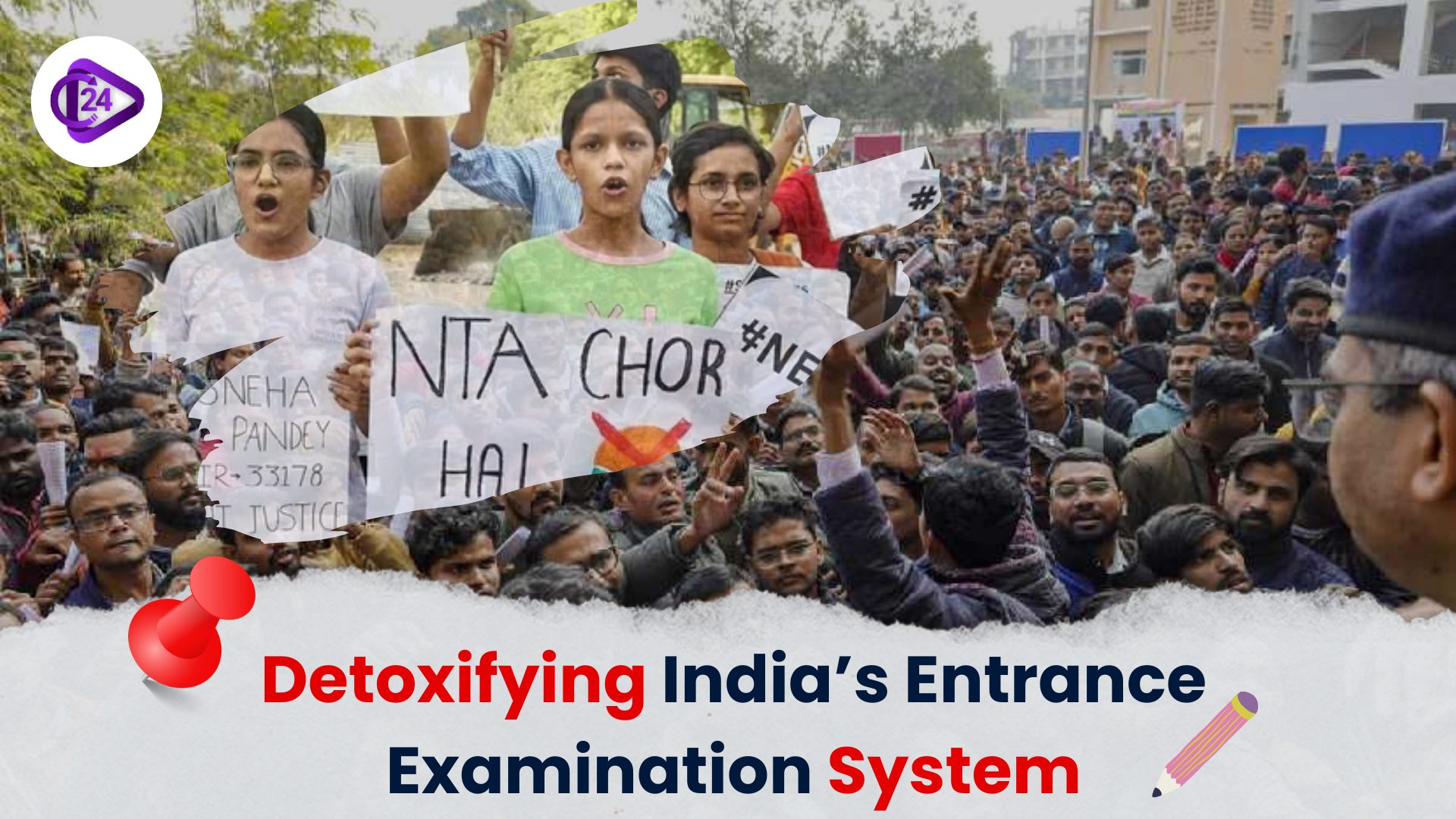
The Prime Minister Dhan-Dhaanya Krishi Yojana (PMDDKY) introduced in the 2025-26 Union Budget has the vision of transforming farms by enhancing their productivity and creating a sustainable agriculture environment. This plan is a consolidation of 36 schemes in 11 ministries into a single scheme generating an annual outlay of 24,000 crore to be pursued over a period of 6 years. There will be at least 1.7 crore farmers benefited in ways like improved irrigation, post-Harvest storage facilities and easy access to credit. It is a district-based programme which resembles the Aspirational Districts Programme, with national, state, and district planning committees. 100 of the worst performing districts will be targeted by the programme to transform the sector of agriculture.
Context & Background:
- Putting the Union Budget 2025-26 agri-initiative as a first-of-its-kind comprehensive agri-initiative on record.
- It was launched to substitute and harmonize 36 overlapping schemes in agriculture and allied fields.
- Following the example of the Aspirational District Programme, one is to be mindful of convergence, competition, and collaboration.
Key Objectives of PMDDKY:
|
Objective |
Focus Area |
|
Productivity Enhancement |
Use of technology, better inputs, irrigation |
|
Sustainable Practices |
Natural & organic farming, soil and water conservation |
|
Value Addition |
Post-harvest infrastructure, agro-processing |
|
Credit Access |
Short-term and long-term credit facilitation |
|
Crop Diversification |
Moving away from water-guzzling and monoculture crops |
|
Local Livelihood Creation |
Allied sectors like dairy, fisheries, and food processing |
Structural Features:
-
Converged Approach:
-
Merges 36 existing schemes across 11 ministries.
-
Works in partnership with States and private sector.
-
-
Targeted Districts:
-
100 districts selected based on:
-
Low productivity
-
Low cropping intensity
-
Low credit disbursement
-
-
Each state will have minimum one district selected.
-
-
Implementation Mechanism:
-
District Dhan Dhaanya Samiti will prepare localized agriculture plans.
-
Inclusion of progressive farmers in planning.
-
Committees at District, State, and National levels for planning and monitoring.
-
-
Monitoring:
-
Monthly review mechanism to assess progress.
-
Linked to national goals: self-sufficiency, sustainability, diversification.
-
Budget & Duration:
|
Particulars |
Details |
|
Total Outlay |
₹24,000 crore per year |
|
Duration |
6 years (2025–2031) |
|
Target Beneficiaries |
1.7 crore farmers |
|
Coverage |
100+ districts |
Modelled on Aspirational District Programme:
Similarities
- Prioritise on low performance districts
- Data-driven monitoring
- Multi-sectoral convergence
- Localization of planning including stakeholders
- Monthly performance report & comparison
Expert Insights (from CEEW):
Strengths:
- Broad and blending strategy.
- Focus on diversity and sustainability.
- Agro-ecological and income conformity.
Criticism:
- Credit-based selection is flawed: Reliance on credit isn’t always linked to productivity.
- Suggested improvement: Use net agri-income per hectare instead as a better indicator.
Significance for India’s Agri-Economy:
|
Area |
Impact |
|
Doubling Farmer Incomes |
Through diversification, storage, and value chain integration |
|
Sustainability |
Promotion of organic, natural farming, water-soil conservation |
|
Agri-Infrastructure |
Stronger local storage and irrigation facilities |
|
Financial Inclusion |
Structured access to credit and insurance |
|
Holistic Rural Development |
Boost to allied sectors and employment in rural areas |
Challenges Ahead:
- Division in various departments.
- Well developed district level planning capacity.
- Preventing local implementation capture of the elites.
- Instead of parallel schemes, making sure actual convergence.
Way Forward:
- Apply solid agri-data and GIS in planning at district levels.
- strengthen the Gram Panchayats and the farmer producer organisations (FPOs).
- Target the small and marginal farmers and be equitable.
- Intensify connections to e-NAM, PM-KUSUM and PMFBY, and other agri-schemes.
- Use the monitoring and evaluation of institutions, academia, NGOs, and research institutes.
Conclusion:
The PM Dhan-Dhaanya Krishi Yojana is a landmark change in India agricultural policy since it has integrated the scattered schemes through a mission mode philosophy. Its approach of sustainability, inclusion and decentralization can potentially turn bad-performing agri-districts into self sufficient and resilience rural economies provided it is well done with local control, visibility and involvement of the farmers.



 Reforming India’s Entrance Exams: Towards Equity and Student Well-being
Reforming India’s Entrance Exams: Towards Equity and Student Well-being Dowry Deaths in India: Nikki Bhati Case Exposes Systemic Silence
Dowry Deaths in India: Nikki Bhati Case Exposes Systemic Silence J&K: Annual Mela Patt Festival Begins in Bhaderwah
J&K: Annual Mela Patt Festival Begins in Bhaderwah Prime Minister Extends Warm Greetings on Nuakhai Festival
Prime Minister Extends Warm Greetings on Nuakhai Festival School Enrolment in 3-11 Age Group Drops by 25 Lakh: UDISE+ Report
School Enrolment in 3-11 Age Group Drops by 25 Lakh: UDISE+ Report Punjab and Haryana HC Grants Bail to Bangladeshi Woman: Application of Article 21 for Foreign Nation
Punjab and Haryana HC Grants Bail to Bangladeshi Woman: Application of Article 21 for Foreign Nation NHAI launches Project Aarohan to support education of toll plaza workers’ families
NHAI launches Project Aarohan to support education of toll plaza workers’ families RAN SAMWAD-2025: A Groundbreaking Tri-Service Seminar on Warfighting at Army War College
RAN SAMWAD-2025: A Groundbreaking Tri-Service Seminar on Warfighting at Army War College CISF Launches First All-Women Commando Unit to Strengthen Gender Parity
CISF Launches First All-Women Commando Unit to Strengthen Gender Parity NCERT Introduces Indian Classical Art Forms in School Curriculum (Classes 3–8)
NCERT Introduces Indian Classical Art Forms in School Curriculum (Classes 3–8)






